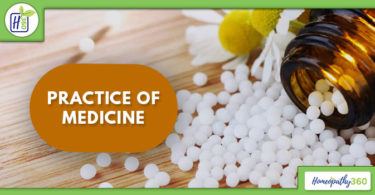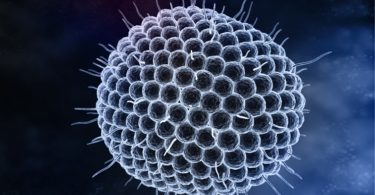Authors: Dr Sheela Dandge, Dr Zankhana Desai
Abstract: It is caused by a false immune response to the nicotinic acetylcholine receptors which are found in junctions between muscles and the nervous system. The human body produces antibodies that attack acetylcholine receptors, interrupting the communication between nerve and muscle, causing muscular weakness. Homoeopathy has great potential for treatment of myasthenia gravis with improving muscular weakness and enhances the quality of life. Alumina, Cocculus indicus, Gelsemium, Conium mac, Curare, Plumbum metallicum, Zincum metallicum suggesting the effectiveness of homoeopathic treatment in cases of myasthenia gravis.
Key words:Myasthenia gravis, homoeopathic approach
Abbrivation: MG-Myasthenia gravis
Introduction
Myasthenia gravis (MG) is an autoimmune disorder where antibodies against the nicotinic acetylcholine receptors on the post-synaptic membrane of the neuromuscular junction inhibit neuromuscular transmission causing muscular weakness. Myasthenia gravis is the commonest neuromuscular disorder with a prevalence of 14.2 cases per million in the US and 20 to 70 cases per million in the UK.1(i)
Causes
Neuromuscular transmission depends on the opening of acetylcholine-gated ion channels in muscles by the nerve-evoked, quantal release of neurotransmitter from the nerve terminal. The resulting endplate potential triggers the muscle action potential, leading to muscles contraction. The primary abnormality in the myasthenia gravis is loss of acetylcholine receptors, which caused by heterogeneous IgG antibodies that can be detected in the serum.2(i)
Classification
According to causes myasthenia gravis classified as2(ii)
1 Acquired autoimmune- cause due to autoimmunity
2 Neonatal myasthenia gravis – cause due to transplacental transfer of maternal antiacetylcholine receptor antibodies
3 Drug induced myasthenia gravis- caused due to some drugs
4 Congenital myasthenia gravis- genetic abnormality in acetylcholine receptors
Triggering factors- Fatigue, Illness, Stress, Extreme heat, Pregnancy, Some medications and some antibiotics.
Signs & symptoms
A disease characterized by progressive fatigue and generalized weakness of the skeletal muscles, especially those of the face, neck, arms, and legs, caused by impaired transmission of nerve impulses following an autoimmune attack on acetylcholine receptors.
Ocular / Eye muscles: In more than half the people who develop myasthenia gravis (MG), their first signs and symptoms involve eye problems, such as: Drooping of one or both eyelids (ptosis), Double vision (diplopia), which may be horizontal or vertical, Blurred vision, which may come and go.
Face and throat muscles: In about 15 percent of people with myasthenia gravis, the first symptoms involve face and throat muscles, which can cause difficulties with: Speaking. speech may be very soft or sound nasal, depending upon which muscles have been affected. Swallowing may choke very easily, which makes it difficult to eat, drink or take pills. In some cases, liquids trying to swallow may come out of nose. The muscles used for chewing may wear out halfway through a meal, particularly if eating something hard to chew, such as steak. Facial expressions. Facial expressions are affected.
Arm and leg muscles: Myasthenia gravis (MG) can cause weakness in arms and legs, but this usually happens in conjunction with muscle weakness in other parts of body — such as eyes, face or throat. The disorder usually affects arms more often than legs.2(iii)
Complications
Myasthenic crisis is a medical emergency that develops when muscles that control breathing become severely weakened. This condition may lead to acute respiratory failure and patients often require a respirator to assist breathing during the crisis. Other complications that may develop include choking, food aspiration, and pneumonia.
Diagnosis
It is not diagnosed easily. Since weakness can happen in any other disease, mild myasthenia gravis is often not diagnosed. Suspected patients can diagnose with the help of Neostigmine test, Icepack test, Electrophysiological test, Serological test, Radiological test.1(ii)
Homoeopathic approach
Homoeopathy with its holistic approach proves to be one of the most valuable systems of medicine while dealing with the cases of Myasthenia gravis (MG). The innermost core of philosophy allows treating the patients on the basis of individualisation. The totality includes subjective and objective understanding about the disease state where the underlying cause and the individual’s susceptibility are being addresses.3
Myasthenia gravis is a progressively deteriorating condition, calling for some measures to control the disease process. Myasthenia gravis (MG) is an autoimmune disorder guided by genetic tendencies and other general factors. In other words, it is a constitutional disorder, where the whole constitution needs to be addressed. Homoeopathic treatment being constitutional in nature treats the disease at a deeper level through the process of full individualizing examination and case analysis.
Related rubrics
Murphy Repertory
Muscles- myasthenia gravis4
Boric repertory
Eyes, Ocular muscles, Paralysis
FACE, Muscles, facial, Paralysis
LOCOMOTOR SYSTEM, Thighs, legs, Weakness, easily fatigued
Indicated Homoeopathic medicine
1.Alumina
People lack of vital heat, prematurely old people due to debility. Heaviness, staggering and sluggishness with very bad constipation are the characteristics of the remedy. Extremities feel paralyzed; leg feels asleep specially when sitting with legs crossed. Heels feel numb, tenderness in soles, feel soft and swollen. Inability to walk especially when eyes are open or in daytime. Pain in arm and fingers, as if hot iron penetrated.5(i)
2.Cocculus indicus
Homeopathic medicine for myasthenia gravis that has weakness of every muscle. Affect primarily to the voluntary muscle system then sensorium. In muscular system cocculus produces paralysis, titanic convulsion and in sensorium produces vertigo and confusion. Paralytic weakness in muscle. Weakness of cervical muscles cannot support head. Painful stiffness in neck when moving it. Hands feel numb and asleep. Numbness of sloes go to sleep while sitting. Hands and feet become cold after change of position.6(i)
3.Gelsemium
Gelsemium act upon the muscles and motor nerves, weakness of throat, chest, larynx, sphincter, extremities, etc. Muscular weakness. Complete relaxation and prostration. Lack of muscular co-ordination General prostration. Dizziness, drowsiness, dullness, and trembling. Loss of power of muscular control. Excessive trembling and weakness of all limbs. Hysteric convulsions. Fatigue after slight exercise. In muscles causes overpowering, aching, tiredness, heaviness, weakness and soreness. Heavy drooping of eyelids. Excessive trembling and weakness of limbs. Knees are weak, feeling of partial luxation of patella when walking.7
4.Conium mac
Conium is an excellent remedy, such as difficult gait, trembling, sudden loss of strength while walking, painful homeopathy medicine for myasthenia gravis stiffness of legs. It corresponds to the debility, hypochondriasis, urinary troubles, weakened memory, sexual debility found here. Great debility in the morning in bed. Weakness of body and mind, trembling, and palpitation. Ascending symptoms, paralysis after diphtheria. Perspiration of hands. Putting feet on chair relieves pain.5(ii)
5.Curare
Homeopathic medicine for myasthenia gravis that has muscular paralysis without impairing sensation and consciousness. Weakness of respiratory muscles. Reflex action diminished. Tired pain up and down spine. Arms weak, heavy. Cannot lift the fingers. Weakness of hands and fingers in pianists. Legs tremble; give way in walking. Debility.6(ii)
6.Plumbum metallicum
Lead paralysis is chiefly of extensors, forearm or upper limb, from center to periphery with partial loss of sensation or over-excitability of the nerve, preceded by pain. Localized neuralgic pains, neuritis. Progressive muscular atrophy. Locomotor ataxia. Excessive and rapid emaciation. The points of attack for Plumbum are the neuraxons and the anterior horns. Cannot raise or lift anything with the hand. Extension is difficult. Paralysis from overexertion of the extensor muscles in piano players. Pains in muscles of thighs; come in paroxysms. Cramps in calves. Stinging and tearing in limbs, also twitching and tingling, numbness, pain or tremor. Feet swollen. Pain in atrophied limbs alternates with colic. Loss of patellar reflex. Hands and feet cold. Pain in right big toe at night, very sensitive to touch.5(iii)
7.Zincum metallicum
Poisoning from suppressed eruptions or discharges. The nervous symptoms of most importance. Period of depression in disease. In chronic diseases with brain and spinal symptoms, trembling, convulsive twitching and fidgety feet are guiding symptoms. Lameness, weakness, trembling and twitching of various muscles. Feet in continued motion; cannot keep still. Transverse pains, especially in upper extremity. Soles of feet sensitive. Steps with entire sole of foot on floor.7(ii)
Conclusion
Homeopathic treatment of myasthenia gravis (MG) is based on immune correction. With the help of homeopathic medicines, the faulty immune system can be made to work properly, not producing antibodies that are against the body. Homoeopathy with its holistic approach proves to be one of the most valuable systems of medicine while treating the cases of Myasthenia gravis. Homoeopathy has inordinate potential for dealing Myasthenia gravis with improving muscular weakness and boosts the quality of patient’s life.
Refrences
- Munjal Y.P., API Text book of medicine, 10 th edition, Jaypee brothers medical publishers (P) Ltd, 2015, (i) p 2090 (ii) p 2091
- John G.G. Ledingham & Devid A. Warrell, Concise oxford textbook of medicine, first published 2000, oxford university press, (i) p 1389 (ii) p 1390
- Hahnemann S, organon of medicine, 5th & 6th edition, New Delhi, B jain Publisher(P)LTD, 2015
- Murphy R., Homoeopathic medical Repertory, 3rd revised edition, New Delhi, B jain Publisher(P)LTD, 6th impression 2017, p 1745
- Boericke W., New manual of homoeopathic materia medica & repertory (with relationship of remedies), fourth reprint edition, December 2015, New Delhi, Indian books & periodicals publishers, (i)p 46 (ii) p 296 (iii) p 659
- Murphy R., Lotus Materia Medica, Third revised edition 2010, 6th impression 2017, Noida, B. Jain Publishers (P) LTD, (i) p 603 (ii) p 684
- Phatak S.R., Materia medica of homoeopathic medicines, second edition 1999, New Delhi, B jain Publisher(P)LTD, reprint edition 2008, (i) p 323 (ii) p 746
About authors
- Dr.Sheela Dandge, M.D.(HOM),P.G. Lecturer, Practice of medicine, JNHMC, Parul University, Vadodara, Gujarat.
- Dr. Zankhana Desai, M.D.(HOM), Professor and H.O.D., Community of Medicine, JNHMC, Parul University, Vadodara, Gujarat.





